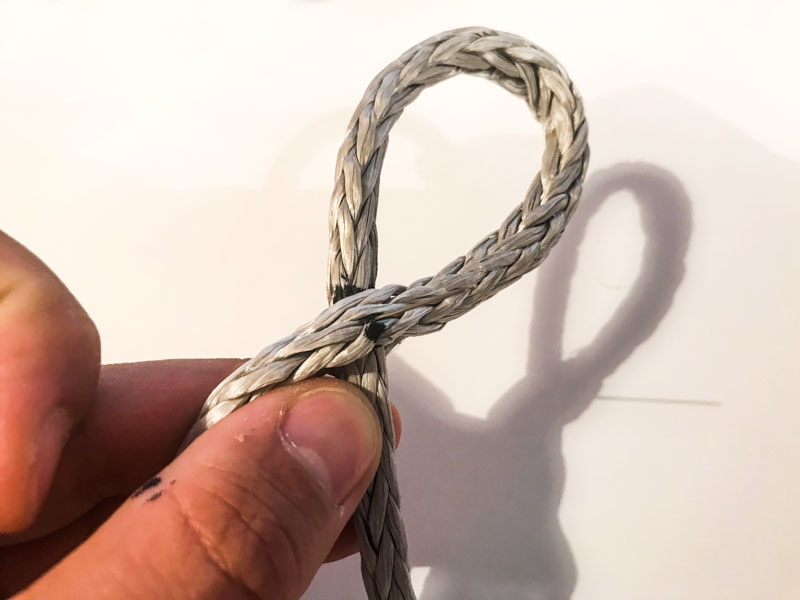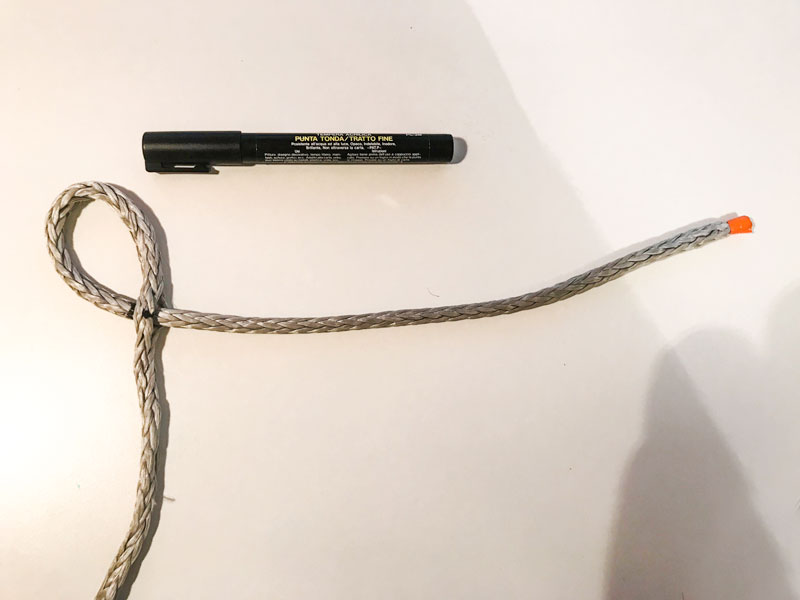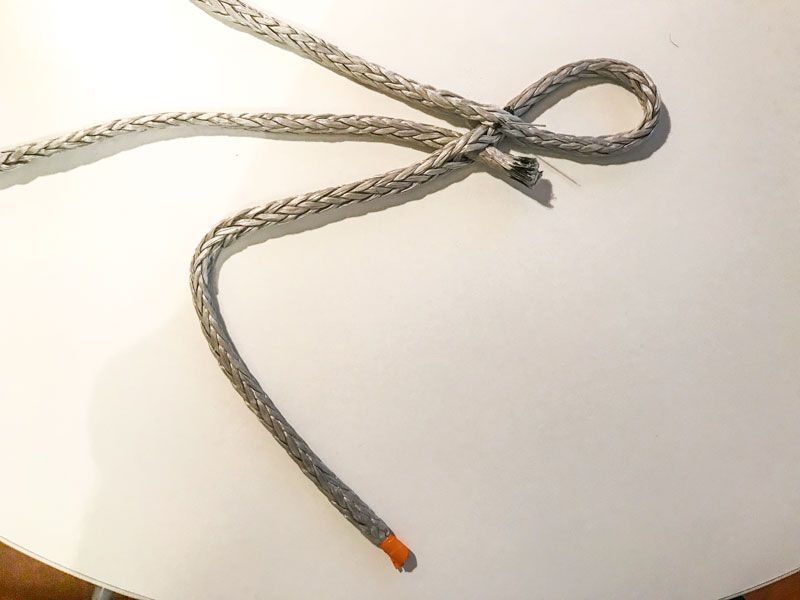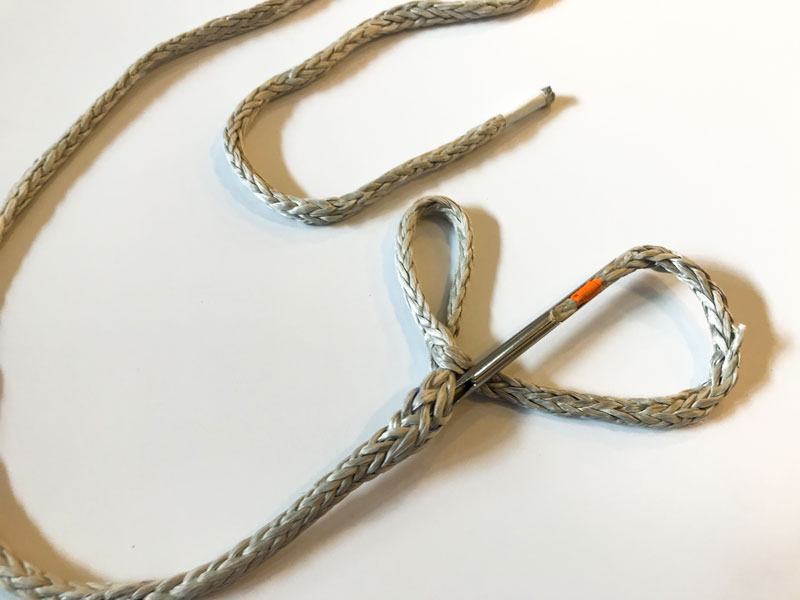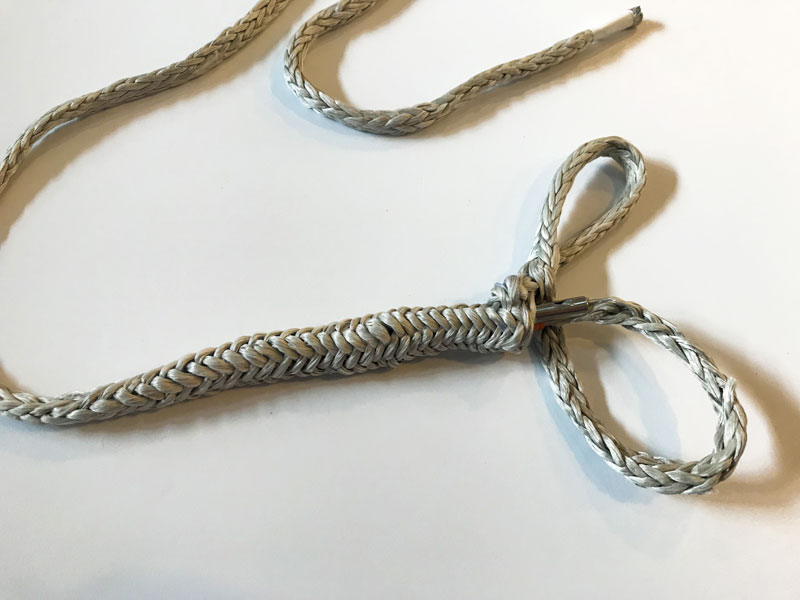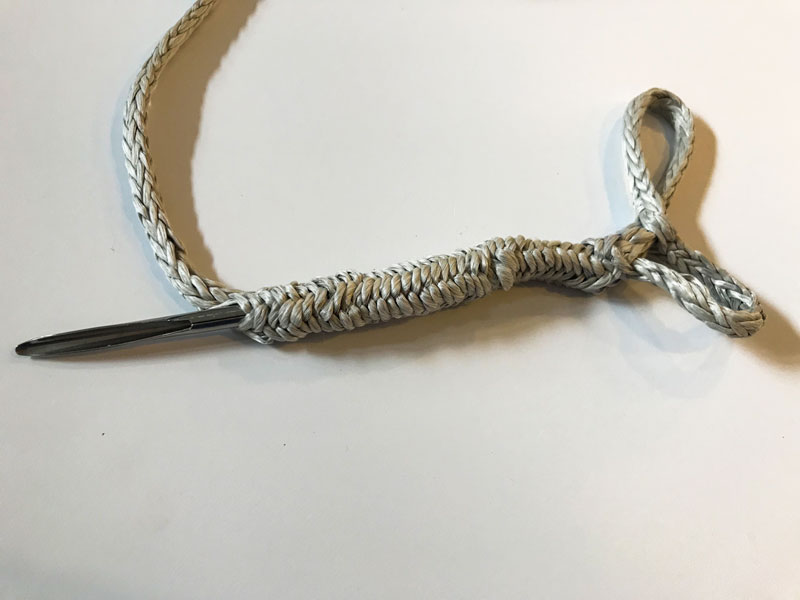Most of you have certainly happened to notice, on the most various ropes, the presence of a splice, that is a simple eyelet used to replace traditional knots. This solution is adopted not only for a simple aesthetic purpose but, above all, in order not to reduce the breaking strength of ropes. Indeed, while breaking strength usually drops to half with a knot, splices guarantee just a 10% reduction on the same point.
There are many types of splices, each with its degree of difficulty, and every good sailor should know at least a couple of them! If you don’t know any of them, don’t worry! In the following lines, we will teach you to tie one of the simplest ones: the lock-splice.
This splice is perfect for Dyneema ropes whose end alternates phases of constant load and splitting phases, as in the case of the sheets attached to the clew.
What tools do you need?
1 measuring tape
1 marker
1 splicing fid
1 sewing needle
1 knife or 1 sharp pair scissors with blades suitable for highly resistant materials
1 Scotch tape
First of all, measure the distance between the dead end of a 300-millimeter rope ( we’re using a dyneema rope with a diameter of 6 mm); the math operation to find this distance is: ROPE DIAMETER * 50), make a mark with the marker. Moving tot he top, make another mark, whose distance will be the diameter of our loop.
With the help of your fid, insert the dead end ( that one wrapped with the orange tape within the dyneema rope near the second mark) and insert the rope until the other mark. Fix everything with a simple sewing needle.
Repeat the same operation just below the first step but reverse parts; consequently, insert the black end in the section of the orange end. Pull both ends to close the loop.
Remove the orange tape and thin the rope, cutting some parts of the Dyneema rope that form the twist.
Put the thin end in the round part of the fid. Its little tooth will keep it blocked.
At this point, with he help of the fid, insert the orange end into the body of the black end.
Remove the fid and pull. Your splice is now ready to use.
The most important aspect of all splices is the compression of the rope into itself, a process which make the Dyneema rope function as a real stopper. Moreover, thanks to the double turn positioned under the loop, when not in tension, the rope will enable the latter not to loosen dangerously.

